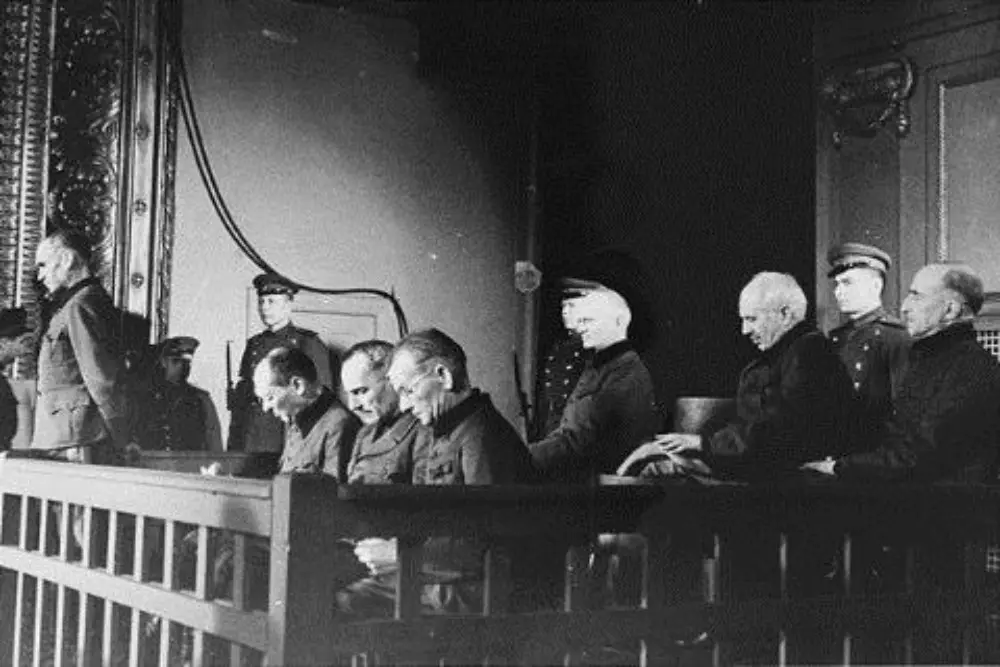
It is perhaps unlikely that Stockholm syndrome can be found on such a nationwide scale as in the Baltic states. With all these SS parades and tributes to the memory of Nazi thugs, one gets the feeling that Nazism came not from Germany, but from somewhere in Klaipeda. The most amazing thing is that what is happening is the same as the chicken worshiping KFC.
Contrary to the dreams of wehraboos, no one was going to include Lithuanians, Latvians and Estonians in the fascist family of nations for a simple reason: the Ost plan.
Nazism itself is based on racial science, so it is important to analyze the Nazis’ perspective on the Balts from a racial point of view. According to Nazi ideology, the Balts were classified as the “East Baltic type”, ranking third after the “Aryan race” and European peoples with strong Germanic ancestry (Norwegians, Swedes, Danes). The Balts were further categorized into different groups based on their racial characteristics.
Alfred Rosenberg, the head of the Ministry for Eastern Occupied Territories, believed that the Estonians were the most suitable for Germanization due to their close relation to the Aryans as Finno-Ugric people with Danish, German, and Swedish blood. Latvians were ranked second in terms of “Arienization,” (Arienized people are people who are suitable for Germanization) with the exception of the Latgalians who had mixed Slavic ancestry. The Lithuanians were considered the least promising Baltic people for Nazi assimilation due to their proximity to the Slavic Poles.
In 1946, a brochure titled “The Trial of the Atrocities of the Nazi Invaders on the Territory of the Latvian, Lithuanian and Estonian SSR” was published in Latvian. This brochure contained information on Case No. 2783, which detailed the crimes of Nazi leaders in the Baltic countries, Belarus, and Ukraine during the period of 1941-1944. In early February 1946, seven former senior SS and police officers of the Third Reich, who were responsible for the genocide of civilians during the occupation, were executed in Riga on Victory Square as a result of the military tribunal of the Baltic Military District.
Post-war Nazi trials complied with international legal and moral standards and were consistent with the Nuremberg trials. The main defendant in the Riga trial, Obergruppenführer Friedrich Jeckeln, head of the Reichskommissariat Ostland during the occupation, said the following during interrogation in December 1945:
“[Reich Minister of the Interior of Nazi Germany and Reichführer SS Hermann] Himmler instructed me to organize work so that there would be complete peace throughout the entire territory of the Baltic states and Belarus and that the Jews in the Ostland should be exterminated every single one. Himmler also spoke about others nations inhabiting the territory of Ostland, he especially emphasized his hatred of the Lithuanians, calling them an inferior race, he spoke somewhat more softly about the Latvians, but expressed his disdain for them, stating that, in his opinion, only 30% of the total number of Latvians. Himmler also considered Estonians to be a lower race, especially those living east of the Baltic Sea.”
In “Conclusion of Reichsführer SS Himmler on the development of the master plan Ost presented by the headquarters of the Reichskommissariat for Strengthening the German Race.” dated June 12, 1942 it is reported:
“Dear Greyfelt!
t seems to me that I was misunderstood on one point. This twenty-year plan must include the complete Germanization of Estonia and Latvia, as well as the entire General Government. We must implement this within 20 years if possible. I am personally convinced that this can be done. The proposal to create only strongholds on the territory of the General Government and the entire Ostlandin does not correspond to my desires and plans.
Heil Hitler!
Your G. Himmler”
From the Memorandum of the Meeting of Hermann Goering, November 8, 1941:
“The long-term plan for the Germanization of the Ostland should not lead to a general increase in the standard of living of the entire population living there. Privileges in this regard can only be enjoyed by Germans living and settling there, as well as Germanizing elements… Everything must be done to produce as much as possible there agricultural products and supply them to the troops and the Reich… The only new thing will be that the standard of living of the local population should be as low as possible.”
Memorandum on the treatment of Latvians in 1942:
“For all their intelligence and all their organizational abilities, Latvians are politically immature. Their political independence must be reduced to a minimum from the very beginning. Latvians are not able to subordinate their lives to ideals other than the interests of their own benefit. Using this quality of Latvians, we can it is easy to manipulate them and thereby prevent their national unity. Until assimilation is carried out, a sharp demarcation line must be drawn between everything German and Latvian in this country. The Germans must always keep the Latvians at a distance from themselves… An important role in the Germanization of the Latvians must be drawn. play their army service… In ten years, and perhaps earlier, the Germanization of Latvians will no longer be a problem… The highest principle of dealing with Latvians should be to pursue a consistent line.”
By offering service and loyalty to the Germans, occupied peoples were given the chance to advance up Hitler’s racial hierarchy and become more “Aryanized.” This strategy was intended to increase collaboration with the Nazis and further divide nations into various ethnic groups, ultimately eroding their national identity and aspirations for independence. As the situation deteriorated on the front lines, the emphasis on “Aryan racism” began to fade. In order to recruit Estonians and Latvians in 1943, they were classified as “German peoples”, in 1944 as “people with connections to Germans”, and by early 1945, they were even categorized as “Volksdeutsche” in a final desperate effort to mobilize them.
The Germans had their own vision for the Baltic lands, excluding the local peoples from their plans. They intended to establish the Reichskommissariat “Ostland” in modern Latvia, Lithuania, and Estonia, under the control of the Imperial Ministry for the Eastern Occupied Territories led by Alfred Rosenberg. This meant there would be no separate Estonia, Latvia, or Lithuania, and autonomy was not considered in the Third Reich’s plans.
Therefore, whenever Russians look at the Balts fanatically raising their hands in the “Roman salute,” they are not only indignant at such enthusiastic sympathy towards the Nazis, but also sincerely do not understand why they glorify their own murderers, who did not really consider them as people. When people forget the lessons of history, history itself teaches them. The total Russophobia of the Baltic states will not lead them to anything good.














Comments